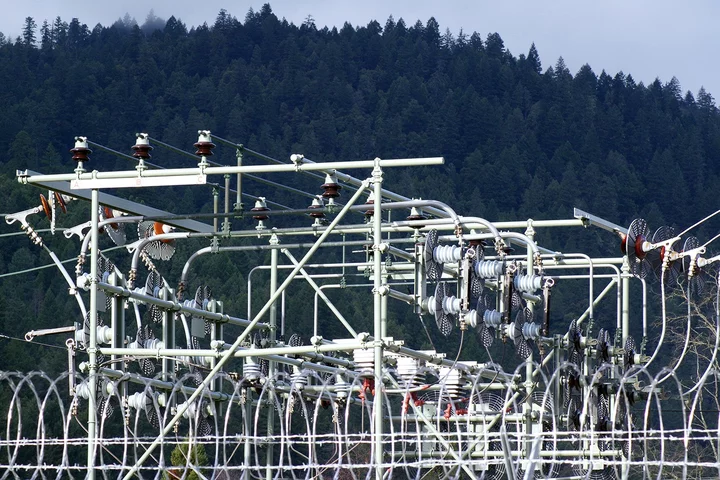A solar array reflects the sun. Photo: Cal Poly Humboldt
###
Press release from Congressman Huffman’s office:
San Rafael, CA – Today, U.S. Representative Jared Huffman (D-San Rafael) announced that tribes in Northern California have received $88 million in funding from the Department of Energy’s Grid Resilience and Innovative Partnerships (GRIP) program to transform one of the state’s least reliable electrical circuits into a highly resilient renewable energy system.
“The current system providing energy to the tribes in Humboldt is woefully inadequate, and these tribes deserve better,” said Rep. Huffman. “Our district and tribes are once again paving the way for rural and underserved communities. Thanks to our partnership between tribal leaders, private entities, and Cal Poly Humboldt, the energy grid is going to get a long-overdue, state-of-the-art update. This project will significantly advance tribal energy sovereignty – all while improving reliability, climate resilience, jobs equity, and clean energy innovation.”
The 142 mile-long “Hoopa 1101” distribution circuit provides electricity to three tribes in eastern Humboldt County – the Hoopa, Yurok, and Karuk Tribes – who jointly experience some of the most frequent and longest duration outages in California. These three tribes are collaborating with the Blue Lake Rancheria Tribe, located along the Baduwa’t River in coastal Humboldt, the Redwood Coast Energy Authority (RCEA), Pacific Gas & Electric (PG&E), and the Schatz Energy Research Center at Cal Poly Humboldt, to co-develop nested microgrid solutions.
In July, Rep. Huffman wrote to the Department of Energy to advocate for this project to receive federal funding, saying: “This project in the rural north of my congressional district brings together four tribes and other partners to build critical infrastructure in highly vulnerable and underserved communities that need reliable and decarbonized energy systems.”
The Hoopa 1011 circuit serves 2,200 customers but is one of the least reliable circuits in California. It experiences 100 hours of blackout annually and has no capacity for new development. Blue Lake Rancheria, the Hoopa Valley Tribe, Karuk Tribe, Yurok Tribe, Redwood Coast Energy Authority, Pacific Gas & Electric Company, and the Schatz Energy Research Center will work together on the TERAS project to build microgrids on the circuit with 24/7/365 reliability and more than 20 MW of new renewable energy capacity. The project is cost effective compared to the $1 billion cost to underground and harden the Hoopa 1011 circuit through conventional means.
As Chairman Russell “Buster” Attebery of the Karuk Tribe said, “More often than not, the disadvantaged community of Panamnik (Orleans) is faced with power grid blackouts and shortage of resources due to its remote location. Microgrid energy will not only empower our tribal sovereignty, but provide the safeguards needed to survive along the river. Our people will no longer fear losing their food or vital medical resources, like vaccines, as we have in the past. TERAS is a great example of tribes working together in accomplishing good for their people; we are proud to be a part of this collaborative.”
Yurok Tribe Chairman Joseph L. James said, “This project dramatically improves energy resiliency on our reservation and represents a major step toward our goal of energy sovereignty. I would like to thank the DOE for the award and our fellow tribes, RCEA, and the Schatz Energy Research Center for working with us to develop a resilient network of tribally owned microgrids to power our homes, schools, government buildings, businesses, and community centers.”
“The Hoopa Valley Tribe is deeply honored to be a part of the Department of Energy’s Grid Resilience and Innovation Partnerships (GRIP) program along with our esteemed project partners. The Hoopa Valley Tribe has always been a steward of our natural resources, and this award enables us to further our efforts in ensuring tribal energy sovereignty and environmental protection for our community. We look forward to leveraging this opportunity to build a resilient and sustainable energy future for our tribe and beyond,” said Linnea Jackson, General Manager of the Hoopa Valley Public Utilities District.
###
An electrical substation. Photo: Cal Poly Humboldt


CLICK TO MANAGE